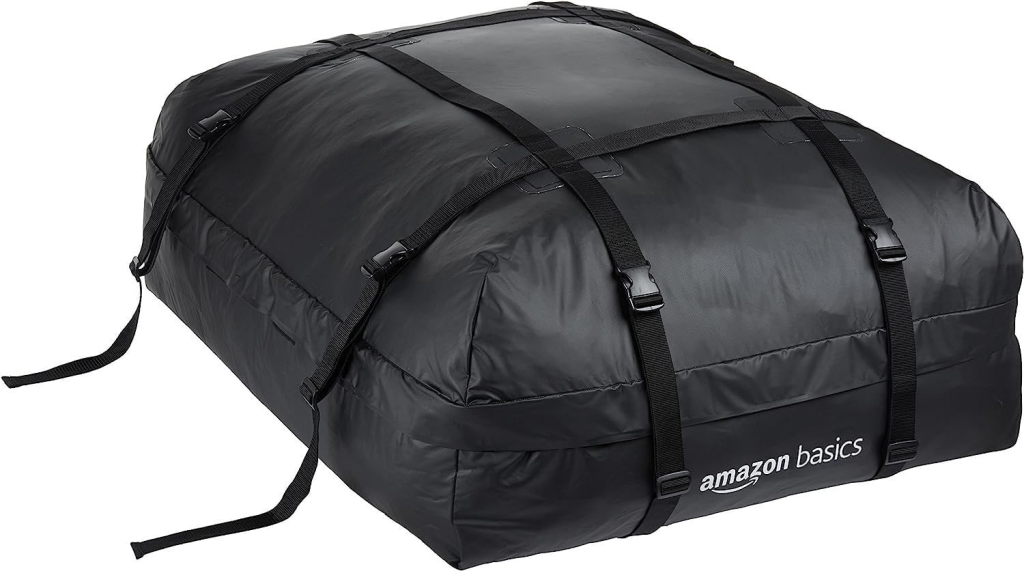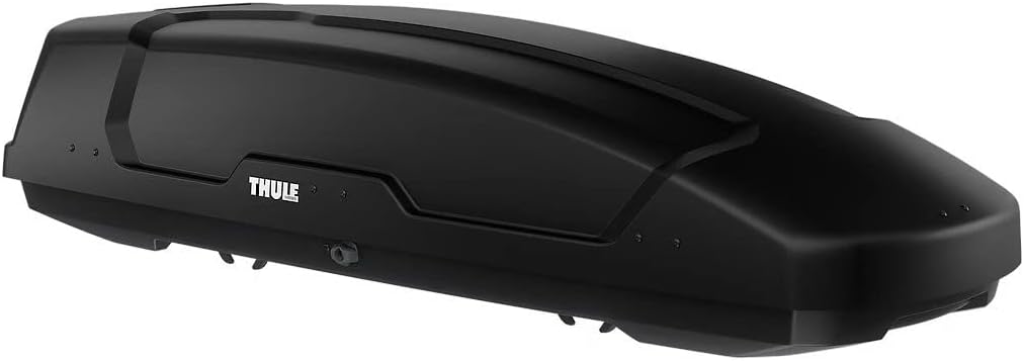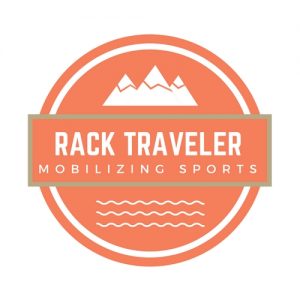
Cargo Bag vs Cargo Box
When you need extra storage space on your vehicle, two popular options are cargo bags and cargo boxes for your roof. But should you use a soft cargo bag or a hard-shelled rooftop box? This comprehensive guide compares the pros and cons of both to help you decide which type of rooftop cargo carrier best fits your needs.
Cargo Bag Overview

Cargo bags offer lightweight, flexible roof storage. Key features:
- Soft vinyl or canvas construction
- Multiple straps secure bag to crossbars
- Roll-top closure design
- Water resistant material
- Expandable capacity from 15 to 18 cubic feet
- Weigh 10 to 25 pounds
Bags mold to the shape of your load and many feature external pockets for extra organization. Low profile aerodynamic shape.
Check out our favorite cargo bags!
Pros
- Inexpensive option
- Easy to install and remove
- Convenient access to contents
- Expandable capacity
- Weigh less than boxes
Cons
- Less durable than rigid boxes
- Maximum load often 100-150 lbs
- Lower security
- Contents exposed to weather
- Flaps and straps can vibrate
Overall, cargo bags offer affordable, nimble cargo space. But they lack some features of their rigid counterparts.
Cargo Box Overview

Cargo boxes are formed from rigid polymers and feature:
- Hard outer shell construction
- Integrated mounting system
- Lockable lids for security and weather protection
- Side opening or rear hatch access
- Internal organizational features
- Sizes from 10 to 22 cubic feet
- Weigh between 30 to 100 lbs
Sleek, aerodynamic shape designed for easy mounting and fuel efficiency.
Check out our favorite cargo boxes!
Pros
- Very durable and secure
- Fully enclosed with lockable lid
- Integrated mounting braces
- Highest weight capacities up to 165 lbs
- Protect contents from weather
- Long lifetime
Cons
- Far more expensive than bags
- Permanent aerodynamic shape
- Bulkier weight and fuel economy impact
- Limit visibility when driving
- Less convenient access to gear
Cargo boxes keep your gear fully protected and secure. But the peace of mind comes at a cost.
Factor Comparison
| Factor | Cargo Bag | Cargo Box |
|---|---|---|
| Cost | $$ | $$$$ |
| Weight | 10-70 lbs | 30-100 lbs |
| Capacity | 15-25 cu ft | 10-22 cu ft |
| Security | Low | High |
| Weather Protection | Minimal | Full protection |
| Convenience | High | Medium |
| Fuel Efficiency | Medium | High |
“I went for a cargo bag because cost and easy access were my main factors. But for valuable gear or long trips, a cargo box is worth the investment.” – James T., automotive enthusiast
Use Case Recommendations
Certain use cases favor one carrier type over another:
For cargo bags:
- Temporary storage needs
- Tight budget constraints
- Frequent access to contents
- Larger or oddly-shaped items
- Protecting dirty/wet gear from vehicle
For cargo boxes:
- Extended trips or full-time vehicle storage
- Valuable or fragile contents
- Streamlined aerodynamics a priority
- Maximum security required
- Protecting clean interior from dirty gear
Evaluate your specific needs to choose the right option. Using both in tandem can also provide the ideal balance.
Mounting Considerations
Both carrier options mount to your roof rack system, but have some key factors:
- Cargo bags use flexible straps to cinch onto crossbars. Ensure even load distribution.
- Cargo boxes integrate mounting braces into the shell itself. No need to lash down.
- Exceeding load capacity voids structural warranty.
- Dynamic weight shifts can loosen strapped bags.
- Avoid resting carriers directly on sunroof.
Improper mounting leads to damaged carriers, failed mounting points, and dangerous road debris if a carrier detaches. Take time to correctly fasten and secure your rooftop cargo per the manufacturer instructions.
Loading and Packing Tips
Optimizing available space comes down to smart loading:
- For both carriers, place heavy items low and centered.
- Strapped bags require evenly distributed tension.
- Modular boxes allow segmenting contents.
- Use luggage organizers and cubes to maximize space.
- Avoid overstuffing and exceeding weight limits.
- Secure contents in place to reduce shifting.
With mindful packing, either carrier will provide ample usable capacity.
Key Takeaways When Deciding Between Cargo Bag and Box
- Assess your budget, usage needs and cargo type.
- Weight factors like fuel economy and roof capacity.
- Ensure you have a compatible mounting roof rack system.
- Follow all guidelines for properly mounting your carrier.
- Use loading techniques tailored for soft bag or rigid box.
- Both options work great depending on situation.
There is no universally superior cargo carrier. Analyze your needs, vehicle, and budget to choose the rooftop solution that’s right for you. With proper selection, mounting, loading and precautions, either a cargo bag or cargo box can provide excellent expandable cargo space.








